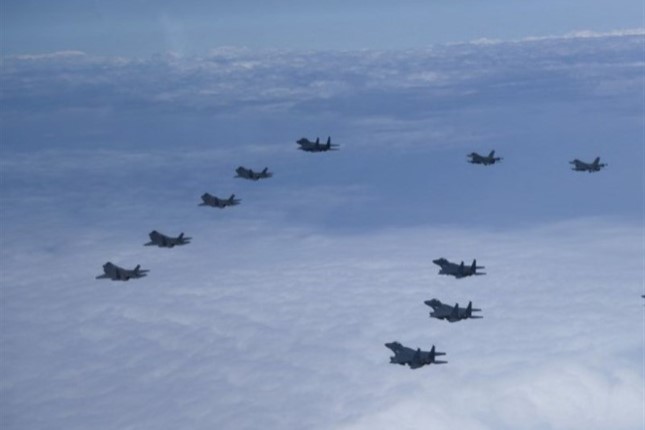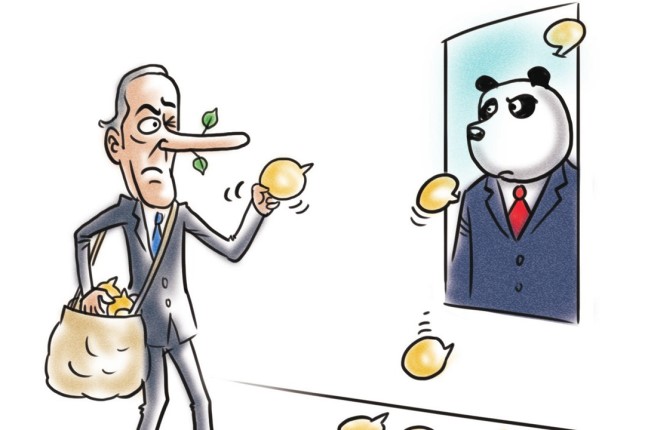The first half of 2022 has ended poorly for the stock markets. SP-500 demonstrated its worst performance since 1970. Since 1932, there were only five times when SP-500 has lost 15% or more for the first six months of a year. By the close of trading on Friday, 24 June, the index declined by less than 18%. Needing to react to rising inflation, the Federal Reserve increased the base rate by 75 basis points. It has grown by 1.5% since the beginning of the year. Overall, it looks like the West is sliding back into stagflation – an unusual and harrowing condition for an economy where stagnation is coupled with high inflation.
Another wave of talks about the decline of American dominance, the twilight of globalisation, and the dollar's demise is rising amid the falling stock markets and unabated geopolitical tensions, particularly around Ukraine. Indeed, it looks like all that, but the issue reveals that American power is transforming rather than disappearing. Moreover, geopolitical mobilisation against the designated common enemy - Russia, strengthens the foundation of its authority. No powers in sight are willing to challenge the US for leadership. Europe has lost its capacity as a player. China is withstanding enormous internal pressure and is simply unprepared. The US can demonstrate its will to power and maintain a regime of, if not hegemony, clearly dominance.
A beneficial standoff
It has long been known that, no matter how weakly positioned the American economy looks, American assets are the most attractive during crises. When geopolitics is unstable, this rule applies twice as certainly. The Federal Reserve can now afford something other developed countries and the largest developing ones simply cannot. Look at how the Bank of Japan reacted to the inflation crisis. Despite the global growth in prices and harsher policies introduced by most central banks, the Bank of Japan, notwithstanding the steepest Federal Reserve rate hike since 1994, ruled out a back-track on its ultra-mild monetary policy.
There is more than one reason for such discretion on that part of Japan. The main one is the massive national debt, which amounts to almost 270% of GDP. Even considering the intricate structure of that debt's ownership, Japan cannot afford its service costs to grow. Although the government or quasi-government agencies largely own the debt, the risks are too high. This policy resulted in a steep decline of the yen, just short of 1999 lowest. Since late February, when Russia began its special military operation in Ukraine, the Japanese yen has lost more than 17% of its value.
The yen is not the only currency to weaken against the dollar amid the special military operation. February became the time point when all the major dollar aggregated indices began to strengthen, be it the US Dollar Index or the Real Advanced Foreign Economies Dollar Index/Real Broad Dollar Index. 2014 repeats itself. July 2014 was the turning point in the dollar's dynamics when Malaysia's passenger jet was downed in Ukrainian air, and the saga of anti-Russian sanctions began to unfold.
World’s most robust financial system
The dollar is protected from geopolitical upheaval not only by the country’s military and political potential but also by the Federal Reserve’s position, better than that of the other three developed countries’ central banks: the ECB, the Bank of Japan, and the Bank of England. Thus, the Federal Reserve's balance amounts to almost 37% of GDP, while ECB's exceeds 82%. The Bank of England's balance stands at 45% of GDP, and the Bank of Japan – 137%. On the whole, the balance of the G10 central banks totals USD 28 trillion, and the Federal Reserve accounts for only USD 9 trillion. Main creditors other than the FRS, namely ECB and Bank of Japan, possess a noticeably less sturdy structure.
Additionally, Europe and Japan happen to occur in zones of growing geopolitical tensions. Europe – due to the ongoing conflict in Ukraine and Japan amid the brewing conflict around Taiwan. Thus, the main risks of the Western financial systems localise outside the US and UK. Geopolitical risks localise there, too.
On the other hand, the snowball of anti-Russian sanctions allows the US to twist its satellites' arms. In total, the West has a mobilisation system where the allies of the US carry the main costs and risks.
This is also China's future
The dollar cannot be rivalled in this system for reserve currency status. According to IMF, Euro is weakened, and its share in international reserves appears to have reached its maximum of some 20%. The Yuan renminbi with its 2.8% is behind the pound sterling with its 4.8%, let alone the Japanese yen with its 5.6%. The dollar's share is slowly decreasing, mainly favouring "lesser" currencies such as Canadian, Australian, Swiss, and New Zealand. Analysts are discussing growing interest in currencies such as the South Korean won or Swedish krona. Second-tier currencies will follow the dollar, so its relative dominance will last for quite some time.
The People’s Bank of China is the only major central bank that stays able to contain the growth of balance relative to GDP, constituting its claim for the status of a leading issuance centre. On the other hand, signs of crisis in the world economy are making China pay a high social price for it. That makes the principal difference. For the US and the others, the status of their currencies as reserve currencies lets them maintain higher living standards, whereas, for China, the acquisition of this status must be paid for. What makes it all twice as painful is that the old export-driven growth model has outlived itself. The West has eaten its future. Still, China's future got eaten too because China had been creating its industrial capacity keeping in mind quite a different macroeconomic reality. While China will still be able to take its place in the sun, a full-fledged node of economic growth may seem doubtful. For instance, what Huawei did when it was threatened with secondary sanctions for cooperation with Russia is quite convincing.
What are we to get ready for
The US has gone through periods of relative decline before, such as during the 1970s. History showed that the country could manoeuvre and transfer costs for regrouping measures on others. American dominance in the digital and telecommunication spheres is at the core of the existing economic-technological order. By maintaining its leading position, the US can forge coalitions and put rivals under long-term pressure. As illustrated by the example of anti-Russian sanctions, we can't overestimate them or underestimate them. Russia was among the most progressive countries in integrating foreign IT technologies into its state and private sectors. Even the limited reduction of availability of imported technologies could turn out to be quite sensitive for Russia's lifestyle and economy.
In April, the US partially realised that by lifting Russia's sanctions on technology: software and hardware for Internet communications and all other operations to receive or transmit information. This is both a success for the Russian side and an indication of its critical weakness. There is no doubt that, at some point, a new stage of mobilisation-related consolidation in the West will make Russia face massive pressure targeting its weak spots and technological underdevelopment.

































